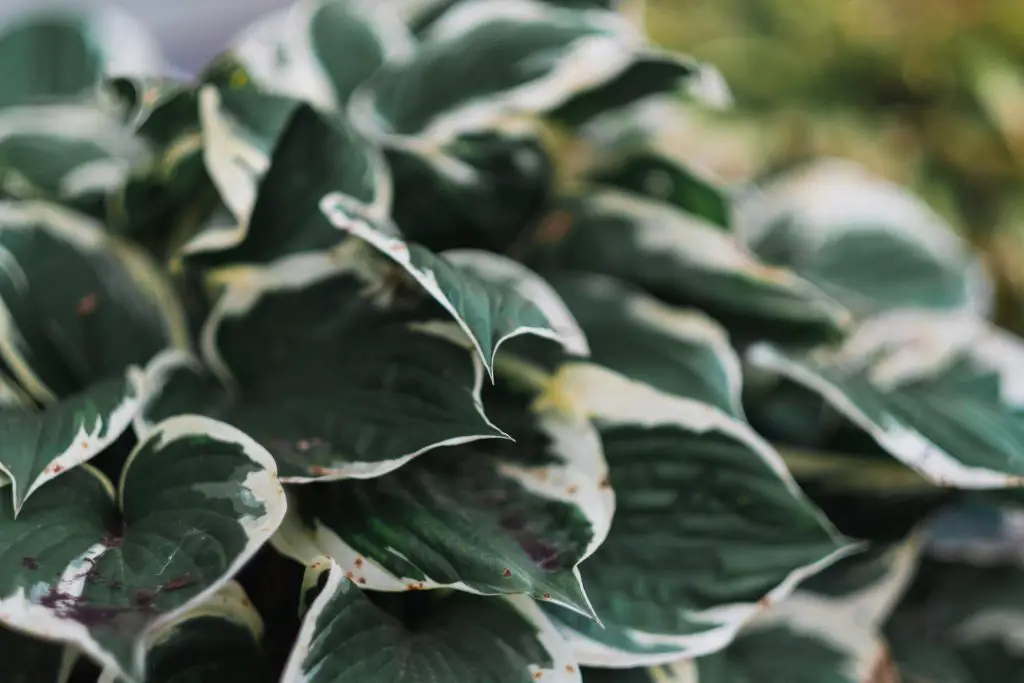Do Deer Eat Hostas? Can You Protect Them? Hostas are an extremely popular garden plant that is used widely in places like the UK in particular because it gives you that luscious tropical appearance even in relatively cool climates. However, if you live in a location where there is a large deer population can you plant hostas safely without having the deer eat them?
Hostas are one of the deer’s favorite foods and will be eaten frequently if the plant is left unprotected according to the new jersey agricultural experimentation station which classifies the plant as being frequently severely damaged by deer. However, despite their fondness for this plant, there are things that you can do to prevent the deer from eating the plants.
The best way to prevent deer from eating your Hosta plants is to exclude them entirely from your garden using fencing. This can be done by erecting an 8 ft fence around the perimeter of your property which may seem excessive, however, academic studies have shown that a large percentage of the deer population can jump a 6ft high fence. To read more about this click here.
However, for many property owners, this option is either too expensive or impractical to implement due to the nature of the terrain in the property. So what other strategies can be implemented to prevent the deer from attacking your garden?

How To Prevent Deer From Eating Your Hostas
Apart from erecting a large fence which is a hundred percent effective, there are several other things that can be done in your garden to reduce the chances of the deer attacking your plants. However, they are definitely not 100% foolproof.
The first thing to consider when trying to keep deer out of your garden is to select plants that the deer do not like to eat and place them in the outer parts of the garden which is the area that the animals will first encounter. If they encounter plants that they do not find attractive to eat they are less likely to progress further into the garden and damage other plants.
As a general rule, deer do not like to eat plants that are fragrant, toxic, or prickly however this is not a hard-and-fast rule. As such it is advisable to double-check any plants that you are planning to put in to ensure that they are not on the menu.
In addition to selecting plants that they do not like it is best if the plants in the outer part of the garden are also relatively tall as this will block the deer’s line-of-sight into the garden where there may be more appetizing plants to consider.

Conversely, it is best if you can plant the hostas relatively close to the house as your day-to-day activities will deter the animals from spending a great deal of time in that part of the garden.
Beyond these measures, the other option is to use deer repellents which can be categorized as either chemical or mechanical deer repellents. Based on academic research chemical deer repellents are generally more effective than mechanical ones though both can contribute to defending your garden from deer.
Chemical Repellents
There is a wide range of different chemical repellents available on the market, however, not all repellents are equally effective. Deer repellents can generally be classified into three categories; fear-inducing, pain-inducing, and general smell and taste repellents.
Of these three types, the most effective is the fear-inducing repellents which are typically based upon ingredients such as coyote urine, blood, and putrified egg. Putrified egg is effective because it produces smells similar to many common predators.
However, academic studies have shown that even the most effective deer repellents will only repel the animals for approximately 10 to 12 weeks. After this time the deer become acclimatized to the smell and will gradually resume their normal feeding habits. To read more about this click here.
To overcome this issue we generally recommend that you use at least two different deer repellents and alternate their application every 3 months or so. The two products that we recommend are deer out and plantskydd. The reason for this is that both of these repellents are fear-inducing and they are produced using different ingredients which means that the scent of the products is distinctly different which increases the chance of there being fewer problems with the deer. To see the latest price on Amazon click on the links above.

Mechanical Repellents
Like the chemical repellents, there is also a large number of mechanical repellent systems available on the market. These products can be categorized into 3 major categories which are; motion-activated sprinklers, ultrasonic products, and predator eyes which are devices designed to mimic the eyes of predators at night.
Of these three products, the motion-activated sprinklers are the most effective, however, they have a similar problem to the chemical repellents as the animals can become quickly acclimatized to their presents. As such it is recommended that you regularly reposition the sprinklers around the garden and also periodically turn them on and off to avoid the animals becoming accustomed to them.
If you have certain critical times of the year in your garden when you particularly want to protect your plants then this is the ideal time to turn the sprinklers on and then leave them off the large portions of the rest of the year.
If you are considering using a motion-activated sprinkler the product we would recommend is the Orbit 62100 Yard Enforcer because it has a 40ft detection range and covers an angle of approximately 120 degrees. This will ensure that a single sprinkler will cover a large area.
The second type that is widely promoted by a range of different manufacturers is ultrasonic devices. Manufacturers claim that these devices are extremely effective against rodents, deer, squirrels, hedgehogs, and domestic cats and dogs. However, despite these claims, there is a broad range of academic studies that indicate that these products are quite ineffectual.

All the studies that I have read indicate that these devices do not alter the animals’ behavior in any significant way. Researchers have also questioned precisely how these devices would actually affect animals as the level of energy emitted is not high enough to significantly affect them. As such we do not recommend that you purchase a device of this nature.
The third type of device is predator eyes have not been assessed to any great degree by researchers. As such I’ve had to rely upon the reviews of people who have purchased the products to gain an understanding of their performance. The reviews on these types of products are generally very poor with there being virtually no positive comments about them.
Most customers are quite disappointed with the produces with some providing night vision of the devices in action showing deer feeding on plants right next to the device. This suggests that these types of products are unlikely to provide any significant protection against deer as such we wouldn’t recommend that you purchase this type of product.
I hope you found this article useful and you are able to successfully grow hostas at home in your garden. if you have any questions or comments please leave them in the section below.
Relevant Articles
Does Deer Repellent Really Work? (All The Answers Based On Academic Research)
Do Coffee Grounds Keep Deer Away?
How High Can A Deer Jump? (And What Type Of Fence Do I Need To Build To Keep Them Out)
Are Raspberries Deer Resistant? (And How To Protect Them)
